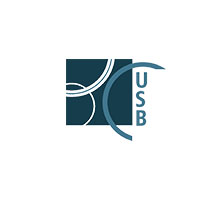Schiefner, Annika  ORCID: 0000-0001-7236-0484
(2025).
Patterns of iconicity across sign languages and gestures.
PhD thesis, Universität zu Köln.
ORCID: 0000-0001-7236-0484
(2025).
Patterns of iconicity across sign languages and gestures.
PhD thesis, Universität zu Köln.

|
PDF
Schiefner_Dissertation_published.pdf - Published Version Bereitstellung unter der CC-Lizenz: Creative Commons Attribution. Download (14MB) |
Abstract
Human communication is inherently multimodal. It expands into any available modality, for example in gesture and sign where properties of meaning are displayed through visual iconicity: resemblance-based mappings between form and referent. Iconicity relies on embodiment and has therefore been explored in concrete rather than abstract semantic domains in the past. This dissertation expands on this by exploring how the body is used for iconic depiction of both concrete and abstract concepts in the visuo-manual modality. It compares lexical signs from two unrelated sign languages, British Sign Language (BSL) and German Sign Language (DGS), with silent gestures produced by non-signing speakers of English and German. The study examines how iconic strategies are employed across modalities and languages through a multi-methods approach. Lexical signs in BSL and DGS showed highly similar distributions of iconic strategies, with the acting and entity strategies emerging as most prevalent. Lexical overlap across the two languages was not predicted by concreteness, but by shared iconic strategy. In gesture, non-signers showed a strong preference for the acting strategy and struggled more with abstract concepts. Interestingly, the same iconic strategies used in sign languages were also found in gesture, though proportions differed both compared to the sign languages and between concrete and abstract concepts. The findings suggest that the potential of iconic mappings for meaning-making in the visuo-manual modality is not limited to conventionalised signs but extends to spontaneous gesture. This iconic potential is structured and shared across user groups, and even abstract concepts can be expressed using these same iconic strategies. Signers and gesturers thus appear to draw from a shared cognitive capacity for form-meaning mapping, enabling humans to flexibly harness the expressive affordances of the body across contexts and communicative needs.
| Item Type: | Thesis (PhD thesis) | ||||||||||||||||
| Creators: |
|
||||||||||||||||
| URN: | urn:nbn:de:hbz:38-786157 | ||||||||||||||||
| Date: | 2025 | ||||||||||||||||
| Language: | English | ||||||||||||||||
| Faculty: | Faculty of Human Sciences | ||||||||||||||||
| Divisions: | Faculty of Human Sciences > Department Heilpädagogik und Rehabilitation | ||||||||||||||||
| Subjects: | Language, Linguistics Other languages |
||||||||||||||||
| Uncontrolled Keywords: |
|
||||||||||||||||
| Date of oral exam: | 7 July 2025 | ||||||||||||||||
| Referee: |
|
||||||||||||||||
| Refereed: | Yes | ||||||||||||||||
| URI: | http://kups.ub.uni-koeln.de/id/eprint/78615 |
Downloads
Downloads per month over past year
Export
Actions (login required)
 |
View Item |
